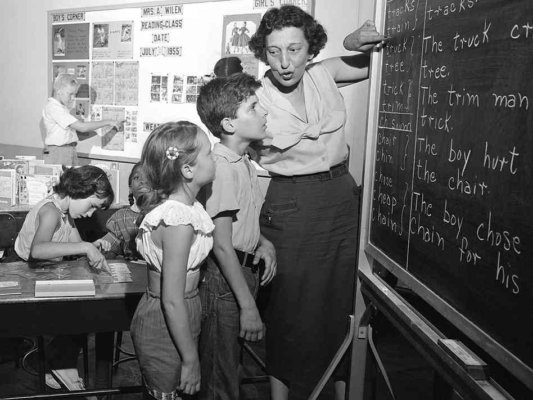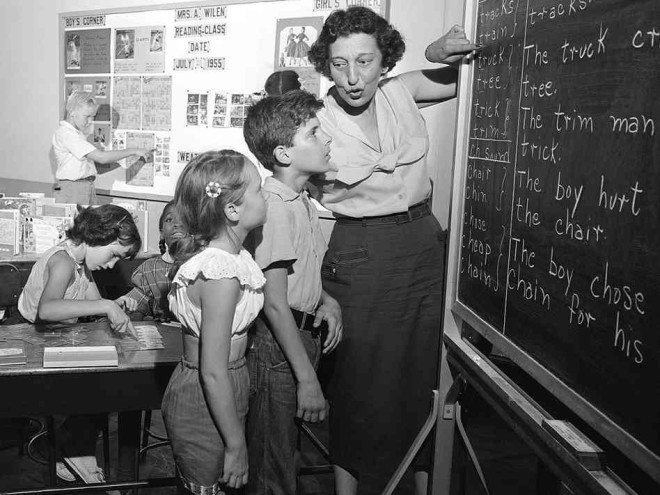The recent decision in California regarding teacher tenure is causing a great deal of anxiety in public education and in those states where teacher tenure still has some meaning. The ruling that tenure is unconstitutional because it denies students the right to a decent education is an interesting take on the subject, but it obscures the truth about how tenure works and why it’s still needed.
I’ve already visited the subject, but it’s worth repeating that tenure is NOT, I repeat, NOT a guarantee of lifetime employment, no matter how many times the know-nothing reformers repeat that it is. Earning tenure merely means that after four years in one district, a teacher must get a due process hearing if a school district wants to fire them. In New Jersey, the tenure laws were changed in 2012 to streamline the process so it didn’t take years and a lot of money in order to fire a teacher. Now, an arbitrator hears the case and generally rules within five months, and their decision is final.
Opponents of tenure, and these are the people who want to privatize all government functions in the United States except the military, say that tenure, and unions, protects bad teachers and makes it almost impossible to fire them. They also say that seniority rules that protect experienced educators at the expense of newer teachers when there are layoffs are outmoded and result in many young, energetic educators being let go before they can even begin their careers. I will admit that there are teachers in classrooms right now who do not belong there and who should not be teaching. There are also middling teachers for whom a younger replacement might mean an improvement in children’s education.
But blaming teacher’s unions is not the answer. No, the real reform in teacher retention, training and development rests with the administrators who run the school districts and schools. They are the ones who have the ultimate power to evaluate and make hiring decisions about their staffs. If these administrators keep teachers who should not be in the classroom, then they will be the ones responsible when those teachers do not turn out to be effective educators.
And who are these administrators? They are self-selected people who decide on their own to become principals and superintendents. There is no national or state organization that recognizes and encourages people who would be excellent administrators and sets them on a path to effective leadership. It’s the luck of the draw, and the deck is thinning in New Jersey due to Governor Christie’s support and signature on a law that limits pay for superintendents and other upper echelon school management. Yes, yes; I’ve heard the false argument that money doesn’t matter in education, at least where pay is concerned, because the false common wisdom is that teachers do not enter their field for the money. If you don’t pay people enough, though, then you don’t get good people to fill those jobs whose charge is to maintain and grow excellent teaching staffs.
It’s a terrible cycle and the California ruling will unfortunately reinforce the idea that if we could only fire incompetent teachers that our schools would improve. Of course, that would be true, but the problem is that schools wouldn’t only fire incompetent teachers. They would fire expensive teachers, union leadership members, teachers who cross administrators or don’t fit the boss’s vision of what a successful teacher looks like. It would also open the floodgates for purely nepotistic and corruptive practices that would make the schools worse. Facebook gave the Newark school system $100 million dollars; don’t you think that any corporation would love to make hiring and firing decisions?
There is far more to this reality than what the know-nothings are saying in response to the California ruling. Only time will tell if the political winds indeed do blow eastward in this country.
You want more? That’s easy. Simply go to www.facebook.com/WhereDemocracyLives or Twitter @rigrundfest









